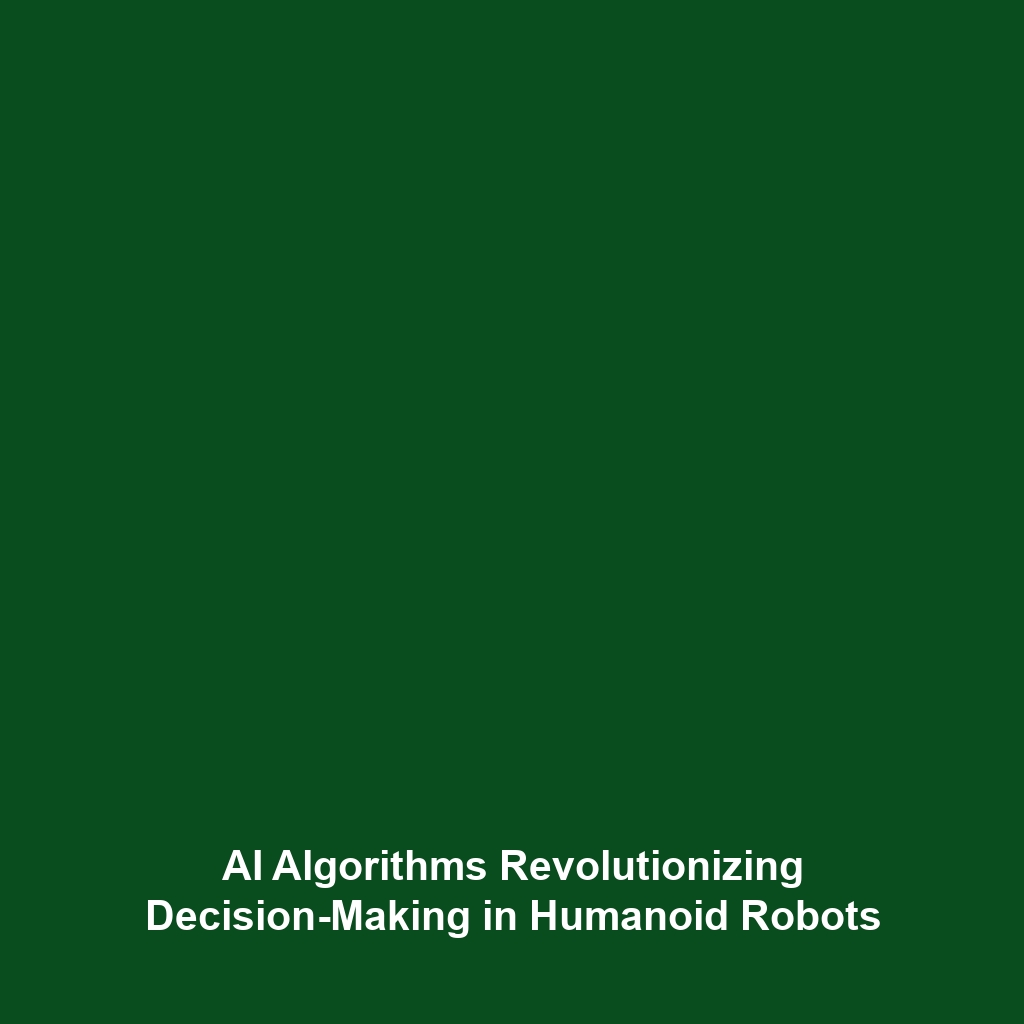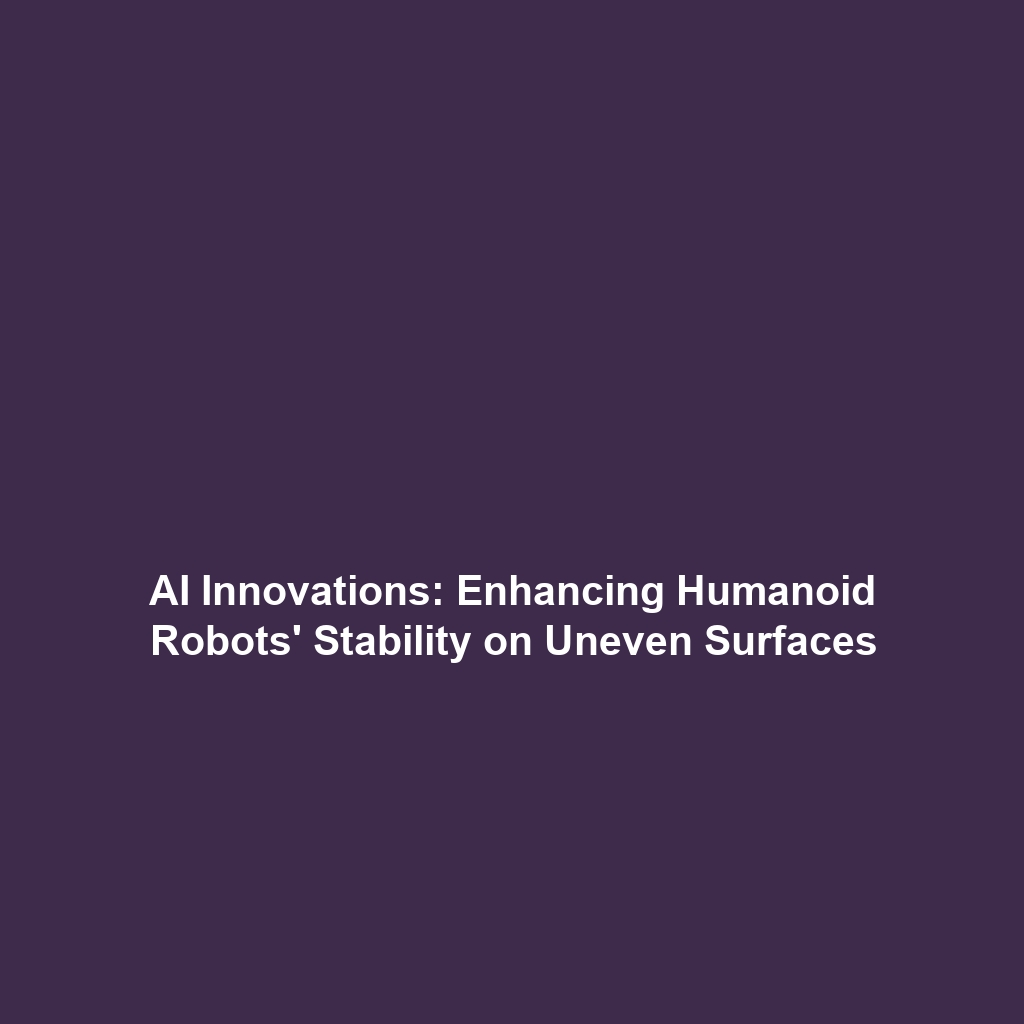Use of AI Algorithms for Decision-Making, Natural Language Processing, and Vision in Humanoid Robots
Introduction
The integration of AI algorithms into humanoid robots represents a groundbreaking advancement in technology. As these machines increasingly embody human-like characteristics and functionalities, the use of artificial intelligence for decision-making, natural language processing (NLP), and vision plays a pivotal role. Understanding how AI algorithms enhance these functions is crucial, as it lays the groundwork for future innovations and applications in humanoid robotics. In this article, we will delve into the key concepts surrounding this integration, real-world applications, current challenges, and future research directions.
Key Concepts
To comprehend the significance of AI in humanoid robots, we must first explore several key concepts:
AI Algorithms in Decision-Making
AI algorithms enable humanoid robots to make informed decisions based on input data from their environment. Techniques such as machine learning and data analysis are fundamental to this process.
Natural Language Processing (NLP)
NLP empowers humanoid robots to understand and respond to human language effectively. This involves parsing grammar, context, and semantics to generate accurate responses and interact fluidly.
Vision Systems
AI-driven vision systems allow humanoid robots to perceive their surroundings, recognize objects, and navigate complex environments. Utilizing techniques like computer vision and image processing, these systems enhance the robots’ operational capabilities.
Applications and Real-World Uses
The applications of AI algorithms in humanoid robots are diverse and impactful:
- Healthcare Assistance: Humanoid robots equipped with NLP can interact with patients, provide reminders for medication, and assist in rehabilitation.
- Customer Service: Robots such as receptionists or information guides utilize speech recognition and response generation for enhanced customer interaction.
- Education: Humanoid robots can serve as tutors, using AI to adapt their teaching strategies to individual learner needs.
These practical uses illustrate how AI algorithms enhance functionalities in humanoid robots.
Current Challenges
Despite advancements, challenges persist in the field:
- Data Privacy: The collection and processing of personal data raise ethical concerns.
- Interpretation Errors: NLP systems may struggle with context or dialects, leading to misunderstandings.
- Hardware Limitations: The physical capabilities of robots can restrict their operational effectiveness.
Addressing these challenges is crucial for the future development of humanoid robots.
Future Research and Innovations
Future innovations in AI algorithms for humanoid robots may include:
- Improved Learning Algorithms: Development of more sophisticated machine learning techniques will enable robots to learn from fewer examples.
- Enhanced Emotion Recognition: Integrating emotional intelligence into humanoid robots for better social interactions.
- Collaborative Robotics: Research into how humanoid robots can work alongside humans safely and efficiently.
Conclusion
In summary, the use of AI algorithms in decision-making, natural language processing, and vision has significant implications for the field of humanoid robots. As technology continues to evolve, overcoming current challenges and exploring innovative solutions will be paramount. For those interested in the cutting-edge developments of robotics, further reading on future research directions is highly encouraged.







